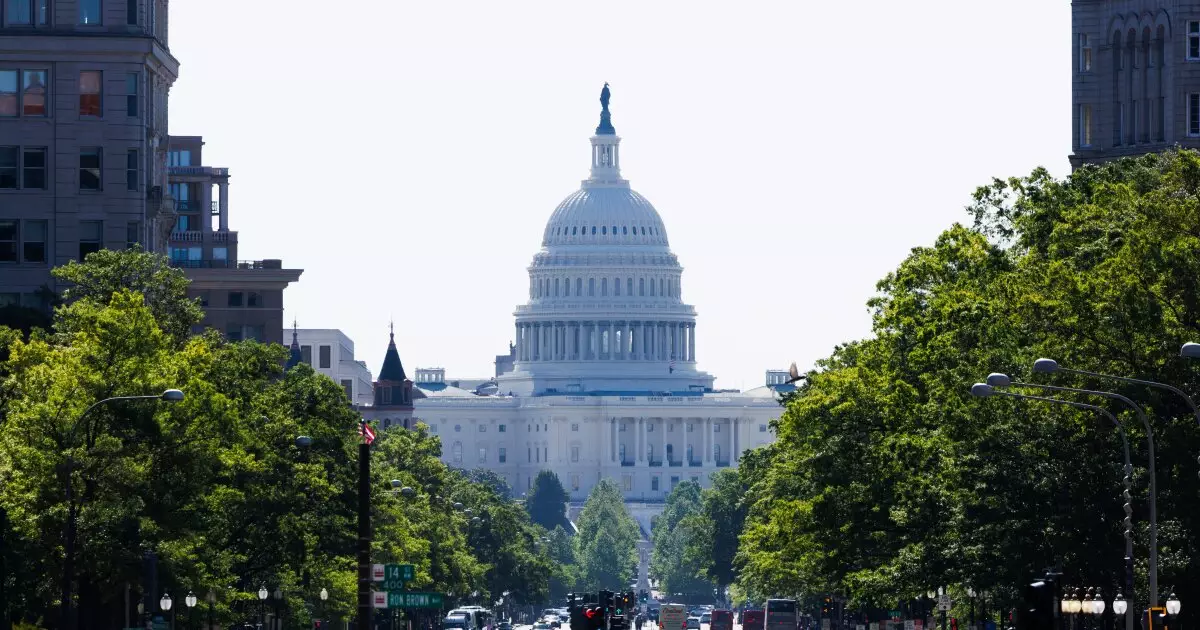In a political landscape saturated with promises and proposals, the House Ways and Means Committee has unveiled a preliminary draft of what they are calling the “big beautiful bill.” While the document itself extends only to 28 pages, its potential implications on the economy could be staggering. Scheduled for further discussion on Tuesday, this draft aims to cement the key elements of the 2017 Tax Cuts and Jobs Act that are set to expire imminently, including a significantly increased alternative minimum tax and an enhanced child tax credit. However, buried within the fine print are severe ramifications that should alarm both taxpayers and investors alike.
Tax Exemptions in Jeopardy
One glaring omission from the proposed draft is any mention of revenue offsets, a critical issue for the municipal bond market. This absence raises a critical red flag: could the cherished tax exemption for municipal bonds be sacrificed to finance this ambitious package? Such a move would not only deter investment in local infrastructures but could also lead to higher borrowing costs for states and municipalities that rely heavily on these financial instruments. If the message from Washington is that tax exemptions are at risk, the implications for the fiscal health of numerous local governments could be dire.
The SALT Caucus: A Major Sticking Point
The debate surrounding the state and local tax (SALT) deduction cap showcases the fractures within the party lines. The SALT Caucus, composed of lawmakers from high-tax states, is poised to play a pivotal role in determining the fate of this reconciliation bill. They have made it abundantly clear that their support hinges on a realignment of the existing SALT cap, reflecting the struggles of constituents grappling with local taxes in states like New York and California. For these lawmakers, the prospect of further financial burdens without an advantageous cap increase is non-negotiable. Their impending meeting with House Republican leaders signals a brewing clash that bears watching closely.
Deficits and the Mismanagement of Funds
Estimations from the Joint Committee on Taxation indicate that the proposed tax changes could cost taxpayers around $5 trillion—a distressing figure that surpasses the $4.5 trillion cap set by the budget resolution. Alarmingly, this $5 trillion price tag isn’t a mere abstraction; it arms critics with enough fuel to argue against what they see as reckless governmental spending. The Committee for a Responsible Federal Budget has already flagged this proposal as a potential catalyst for an exponential increase in the federal deficit, raising fears of long-term economic instability. With projections suggesting a primary deficit increase by up to $5 trillion through 2034, one must question whether this bill reflects genuine reform or is simply a means of financial recklessness masquerading as goodwill for families and workers.
The Larger Political Theater
Much of the rhetoric surrounding the tax provisions echoes President Trump’s original economic agenda, a staple narrative the GOP appears eager to revive. Committee Chair Rep. Jason Smith has emphasized the “pro-family, pro-worker” nature of the proposed provisions, but this framing raises questions. What does it mean for tax reforms to be “pro-family” if they burden future generations with insurmountable debt? Is the political theater being played out genuinely for the well-being of American families, or is it merely an attempt to leverage populist sentiments to pass a deeply flawed bill that lacks meaningful fiscal responsibility?
Raising the Debt Ceiling: A Divisive Decision
As the House Energy and Commerce Committee prepares to markup its portion of this reconciliation bill, a warning has been issued from Treasury Secretary Scott Bessent: the U.S. may hit its debt ceiling by mid-July. This looming deadline is not merely an economic obstacle; it is a stark reminder of the urgency for responsible fiscal governance. The suggested reconciliation bill, which aims to raise the debt ceiling by $4 trillion, serves as a potent symbol of a governmental apparatus sometimes more focused on quick fixes than on sustainable solutions.
In a time where economic stability and responsible governance should be at the forefront of legislative agendas, the unfolding developments surrounding this tax bill reveal a complex and troubling picture. With each piece of the puzzle, it becomes increasingly clear that the road ahead is fraught with potential pitfalls that call for critical scrutiny and engagement from all corners of the political spectrum.

